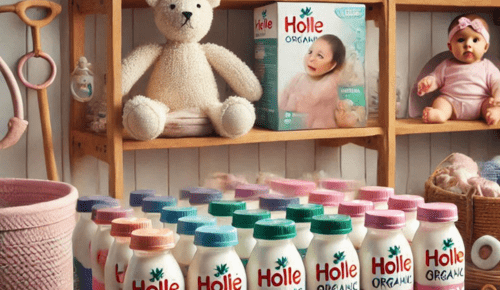Hospitals and clinics often focus so heavily on patient care that the safety of their environment can slip down the priority list. Yet a single overlooked security upgrade has the power to disrupt daily routines, shake patient trust, and even jeopardize lives. By understanding how outdated safeguards put staff, patients, and assets at risk, healthcare leaders can better protect what matters most.
Staff Safety Compromised When Monitoring Systems Fall Behind
Healthcare employees work long hours and often late nights, making them particularly vulnerable without modern monitoring systems. Outdated cameras with poor resolution or blind spots leave entire hallways unprotected, meaning suspicious behavior can go unnoticed until it’s too late. A lack of real-time monitoring also prevents staff from calling for help quickly in tense situations, increasing the chance of harm before assistance arrives.
The absence of advanced monitoring doesn’t just leave gaps in coverage—it also weakens confidence among employees. Staff members who feel unsafe at work are less focused, less productive, and more likely to leave their jobs, creating costly turnover issues. Investing in stronger business security with professional surveillance solutions not only reduces these risks but also gives workers peace of mind that someone is watching their backs.
Unauthorized Entry Becomes Easier with Outdated Door Hardware
Old locks and worn keycard systems invite trouble. Outdated door hardware makes it far too easy for unauthorized individuals to enter areas that should remain restricted, like medication storage rooms or patient records departments. Criminals who gain access through neglected locks can compromise sensitive information, putting both privacy and safety on the line.
Modern access control goes beyond a simple key. Today’s healthcare facilities benefit from advanced systems that allow administrators to track entries, restrict access by role, and instantly disable lost cards. Without these upgrades, an intruder might slip in unnoticed, leaving staff scrambling to handle the aftermath of a preventable breach. Business security is not just about locking doors—it’s about controlling who gets in and when.
Financial Losses Grow from Preventable Theft and Vandalism
A lack of proper protection inevitably leads to financial loss. From stolen medical equipment to vandalized property, healthcare facilities face a growing risk when they fail to modernize their defenses. Even minor incidents, such as the theft of supplies, can add up to thousands of dollars annually.
Insurance rarely covers every loss, leaving facilities to absorb the financial hit. On top of replacement costs, vandalism often interrupts operations, forcing administrators to spend time and money repairing damage instead of focusing on patient care. Upgrading business security with guard services, thorough risk assessments, and ongoing consulting helps prevent these losses before they ever happen.
Emergency Response Slowed by Missing Security Integrations
Emergencies demand speed, but outdated systems slow everything down. Without integrated alarms and access controls, staff waste precious minutes trying to coordinate responses across disconnected devices. For example, a fire alarm that doesn’t link to automatic door releases can trap people in dangerous areas or delay first responders.
Integration is key for effective emergency planning. Modern business security solutions ensure alarms, cameras, and access points communicate with one another seamlessly. In a crisis, this kind of coordination can save lives by allowing security teams and emergency personnel to respond instantly and effectively. Neglecting these upgrades leaves healthcare facilities dangerously unprepared.
Compliance Standards Jeopardized Through Weak Safeguards
Healthcare facilities are held to high compliance standards for patient privacy and workplace safety. Outdated security systems put compliance at risk, especially regarding federal regulations that demand strict protection of medical records and restricted access to certain areas. A single breach can lead to steep fines, audits, and lasting reputational damage.
Maintaining compliance is more than just a legal responsibility; it’s also about preserving trust between patients and providers. Facilities that keep their security systems up to date demonstrate a commitment to protecting sensitive information. Those that don’t risk losing credibility along with money, proving once again how closely compliance and business security are connected.
Daily Operations Disrupted by Recurring Security Breakdowns
It’s not just emergencies or breaches that highlight poor security—daily operations suffer, too. Malfunctioning cameras, faulty alarms, and broken access points create constant distractions for staff. Every time a system fails, workers are forced to stop what they’re doing to address the problem, pulling them away from patient care.
Recurring breakdowns also erode confidence in leadership. Staff and patients alike begin to notice when problems persist, questioning whether management takes safety seriously. Proactive investment in reliable security consulting, training, and maintenance ensures that operations run smoothly without these avoidable disruptions.
Reputational Damage Escalates When Breaches Reach the Public
News of a security breach spreads quickly, and healthcare facilities cannot afford the reputational damage it brings. Patients want to know that their medical information is private and that their safety is a priority. Once a breach becomes public, regaining that trust is incredibly difficult, and the long-term impact often outweighs the immediate financial loss.
Reputation is built on reliability. Strong business security safeguards protect not just physical assets but also the public image of a healthcare provider. By failing to prioritize upgrades, administrators risk undermining community confidence—a cost no hospital or clinic wants to pay.




